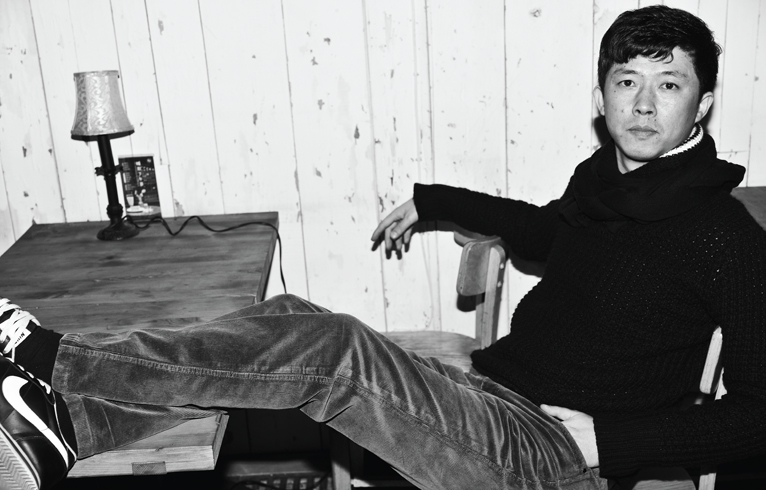ART BEIJING APPROACHING
| April 3, 2011 | Post In LEAP 8

LEAP: Art Beijing is already in its sixth edition, which is hard to believe. Seems like just yesterday you were preparing the inaugural version.
DMY: When it all got started, there wasn’t much else for me to do. I couldn’t find other jobs, you know, I was too old. So I had to make something for myself.
LEAP: Not a lot of jobs out there for art history majors, it seems.
DMY: I guess everybody thinks I was an art history major, but I actually studied printmaking in the same department as Fang Lijun.
LEAP: And yet we’ve seen so many changes since 2006 when you began. How do you see the next two years unfolding?
DMY: ART HK is collaborating with Art Basel, and China has become a battleground of sorts. So where do we stand as a domestic fair? People always claim the problem lies with import duties, but for me it’s much bigger than that, it’s a question of our degree of civilization. People have asked me: “Why did Ullens pick up and leave?” I think it’s largely because China’s policies aren’t very suitable to an institution like UCCA. But Ullens himself is a very sophisticated individual, and for years people have tried to shove work on him, fooling around and making a mess of things. Ullens has had to play along, at the expense of his reputation. Compared to the situation abroad, it seems like we’re still stuck in a backwater, even if we’re drinking the same coffee as everybody else. Like with the state of the market, Chinese artists are clear about the discrepancies between their works and those of say Freud or Picasso, yet speculators have the power to set the prices of Chinese works higher than a Morandi. That’s just absurd! Would anyone say that you can screen a Chinese film like Little Soldier Zhang Ga alongside The Godfather?
LEAP: Last year you expanded from the single contemporary fair to a second fair, Fine Art Beijing, featuring modern work. What does Art Beijing have in store for us this year?
DMY: Later this year we’re adding a design exhibition, because in China I feel there’s a strong connection between design and daily life. So people are ready to embrace design, and gradually come to treat it as an art form. We’re always shuttling back and forth between the past and the present. That’s how the market works. Before we had even grasped the “modern,” we had already leapt ahead to the “contemporary.” And then we’re right back trying to solve the problems of the “modern” once again. As for the fair in May, we want to focus on highlighting its strengths. I don’t want to overdo it in terms of scale, but hope to make it more substantial in content. I never liked going to art fairs before because it seemed like everything followed a set pattern, as if the painters were all producing the same works. So we’re not trying to get as many countries as possible to participate. We want to raise our standards, to focus on quality and not quality. Especially with the Western galleries, I haven’t gone out chasing them or anything, but if they want to be involved, I usually won’t refuse. Of course, if they’re really bad I’ll reject them. But I’m working hardest now on bringing out the best from the Chinese side.
LEAP: Beijing has been a city of two art fairs for the better part of a decade now; do you think Art Beijing and CIGE have diverged to the point where they attract different audiences?
DMY: Having a competitor so close at hand certainly keeps us on our toes. But on another level, having two art fairs on the scene already has actually kept other, possibly stronger players from entering this market. So maybe in that way, we’re both lucky, in that we give each other a space to develop. I don’t think it’s necessarily a bad situation.
LEAP: Last question: how many people in China would you call “real” collectors?
DMY: Last year I went to an annual meeting for collectors in Chengdu, which was essentially a meeting of investors and speculators. Even though some people buy works and don’t intend to sell them, they still buy for investment. People buy these historical realist Chinese paintings that have no artistic value; they’re no different from the illustrations in my son’s textbooks. They may have historical status, but they just don’t compare to a Picasso or a Monet. I’m in no position to tell collectors that their acquisitions are wrongheaded, but someone has to stand up and say, don’t mess around, and tell them what’s good and what’s not. This situation has an impact on young artists. It’s like how the climate wasn’t right in France this year, and the rainwater wasn’t good for the grapes, so this year’s wine will be subpar. With the conditions now in China, young artists have all but been completely destroyed. I don’t know why, but their prices have risen dramatically. Though in this wave of new artists, there must be some great artists we haven’t discovered yet. And I’m sure they’ve got the chops. But artists can’t abandon their skills entirely, whether you call their work modern or contemporary. If you’re trying to be a conceptual artist and you’re just babbling all the time, that’s literature, not art. Who are you trying to fool? It’s not only important for artists to generate ideas, they also have to express themselves with some sincerity.

